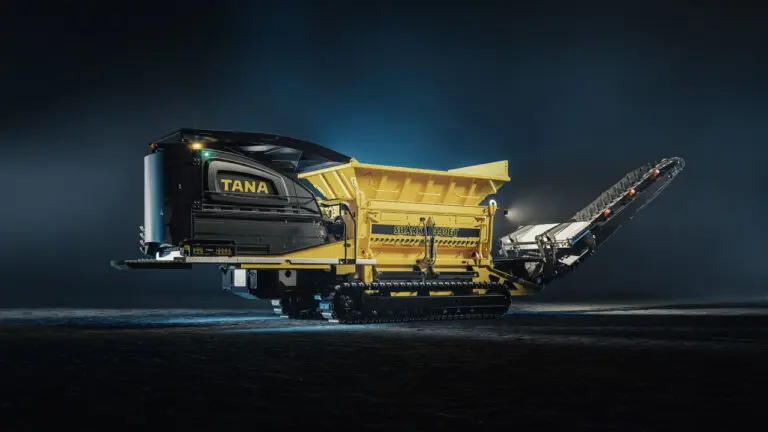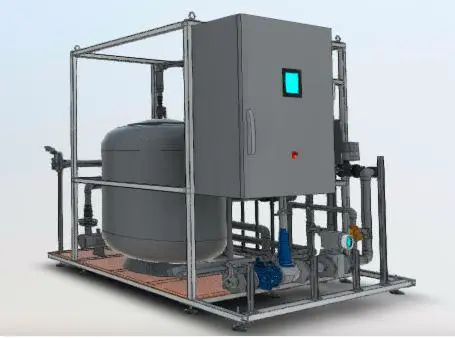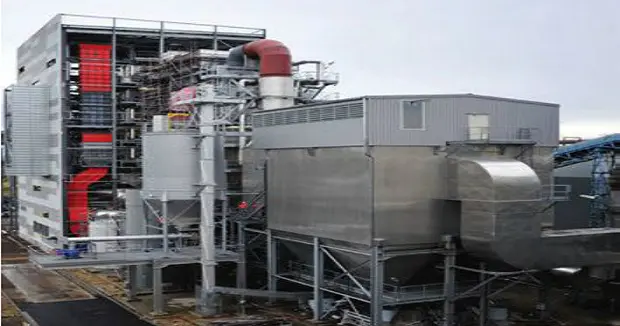With the promise of ultra-low emission power generation, fuel cells have long been the holy grail of the power industry. But the hydrogen requirements of traditional low temperature units have been something of a stumbling block. That’s a problem one U.S. based company has solved with its high temperature carbonate fuel cell.
by Ben Messenger
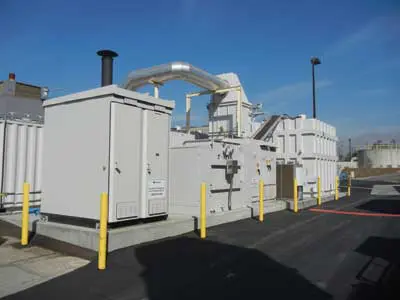
The Holy Grail of energy
Fuel cells are not new technology. Invented by German Physicist, Christian Friedrich Schönbein they have been under development since 1838 – just 15 years less than the internal combustion engine. But unlike the internal combustion engine they have remained a relatively niche technology.
However, while the difficulties of economically producing and storing the large quantities of hydrogen required by traditional low temperature fuel cells has hindered their commercial success, thanks to the promise of near zero emission power generation, the commercialisation of the technology has become something of a ‘holy grail’. But now, thanks to its fuel-flexible technology, that’s a prize Danbury, Connecticut based FuelCell Energy believes it may just have one hand on.
Speaking to WMW Tony Leo, vice president of application engineering and new technology development at FuelCell Energy explains: “At the end of the day what’s going to react with a fuel electrode is hydrogen. So what fuel cell developers have been doing is looking for a variety of different ways to get hydrogen from commonly available fuels. Our particular type of fuel cell, which is called the carbonate fuel cell, runs at a temperature that allows us to extract hydrogen from methane fuels easily, right inside the fuel cell stack.”
The problem with producing hydrogen from methane – which is a molecule consisting of four hydrogen atoms and one carbon – is that the systems necessary can be efficiency reducing and expensive. But it’s a problem Leo says Fuel Cell Energy has cracked.
“We send methane into our fuel cell stack and there’s a reaction that occurs in the stack. The methane reacts with water. All the hydrogen in the water and the methane separate out and become pure hydrogen, and the oxygen in the water reacts with the carbon in the methane to become carbon dioxide,” he explains.
“Our systems are designed to do that from almost any methane fuel. We can use natural gas, which is almost all methane or we can use biogas from anaerobic digestion, and that’s maybe 60% methane or we can use landfill gas, which can be anywhere from 45% to 50% methane,” adds Leo.
High efficiency, low emissions
The basic idea behind a fuel cell is that it makes electricity without burning the fuel. According to Leo that gives it two main advantages over more conventional combustion based power generation – high efficiency and low emissions.
“Usually if you want to make electricity you burn the fuel and you take that heat and maybe you boil water and spin a steam turbine, or maybe you expand the hot gases in an engine or a gas turbine. But all those steps, burning and making pressurised gas and spinning a turbine, which spins a shaft, which spins a generator – all those steps lose efficiency. Plus the flame associated with burning the fuel makes things like nitrogen oxide and particulates,” he says.
Leo analogises the process to that which occurs in a battery. For example, if nickel and cadmium are mixed together they produce heat. In a battery the two elements are kept separate by an electrolyte which causes a flow of electrons.
In a fuel cell the fuel goes into one compartment where there is a reaction that consumes the fuel and makes electrons. Air goes into another compartment where there’s another reaction that consumes the oxygen in the air, as well as the electrons produced by the fuel electrode. That production and consumption of electrons is what drives the power circuit and produces electricity in a very efficient single step.
Moving into landfill
The company has already developed many facilities which use natural gas, and is increasingly taking on larger scale projects of up to 60 MW. According to Leo, the natural gas applications are now widely understood and accepted. However, the other area in which the company is very active is the wastewater treatment market, where it has a number of projects in California which are running on biogas produced by the anaerobic digestion of municipal wastewater.
But anaerobic digesters are not the only source of biogas that the company has had its eye on, and for some time has been contemplating the prospect of developing a landfill gas project.
“Landfill gas can be a little trickier than municipal wastewater gas because it can be a little more variable. Gas production from a landfill typically has a finite life so you have to predict what it’s going to look like over time. There’s also some contaminants that are a little unique,” explains Leo.
“So while we’ve focused on municipal wastewater applications over the years, we’ve kept our eye on landfills and every so often a landfill opportunity would pop up,” he continues.
To that end, back in February this year the company signed a contract to demonstrate a 300 kW tri-generation stationary fuel cell plant at a landfill near Vancouver, Canada. The project will utilise landfill gas as the fuel source and generate electricity for export to the grid, heat for use by Village Farms’ nearby hydroponic greenhouse facility and hydrogen for vehicle fuelling or industrial applications.
Once operational the facility is expected to produce around 135 kg of hydrogen per day – enough to fuel around 30 cars or five buses under normal usage.
Landfill gas clean up
Thanks to some of the unique impurities that Leo says are found in landfill gas, prior to use in the fuel cell it needs to be cleaned. The company responsible for performing the gas clean-up is FuelCell Energy’s partner and prime contractor for the project, Vancouver based Quadrogen Power Systems, which builds and installs biogas clean-up solutions capable of purifying renewable fuels.
“It’s an advanced clean up system which requires a little bit of hydrogen. The fact that we’re making hydrogen allows this type of technology to be easily deployed. We like to call it hydrogen assisted gas clean-up,” explains Leo.
“We send a very small amount of the hydrogen back, which is mixed with the landfill gas that’s being cleaned up and the hydrogen reacts with the impurities and converts them to a much more simple molecule which can easily be absorbed. It’s an advanced approach to cleaning up these dirty biogases that really enables us to think about looking at lower quality gas streams,” he continues.
The two companies have previously worked together on a wastewater biogas project for the Orange County Sanitation District in California (OCSD). That project became the first fuel cell powered, hydrogen energy station to be successfully developed at a wastewater treatment plant. Air Products and the National Fuel Cell Research Center at the University of California Irvine also participated in the OCSD project.
Quadgeneration?
Not satisfied with using just three of the fuel cell’s outputs, the project is going one step further and taking advantage of something which could have been considered one of its few negative environmental impacts – its CO2 emissions.
“This landfill project is interesting because in some respects it’s a quadgeneration project. We’re making electricity, heat and hydrogen, but also Village Farms are going to use the CO2 from our exhaust in their greenhouse. It’s going to be blended with air and sent into the greenhouse to promote more rapid growth of the plants,” says Leo.
Start up and maintenance
One of the big advantages of a fuel cell is that with no moving parts, the maintenance schedule is less demanding than for a reciprocating engine or a turbine. However, high temperature fuel cells cannot simply be turned on and off at the drop of a hat.
“Because we run at 1000°F (538°C) we have to heat our cells up to that temperature, so when we start the fuel cell up it takes a few days to get up to operating temperature. But once it’s got there it pretty much stays there until you need to cool it down to replace the key cell components in about five years,” explains Leo.
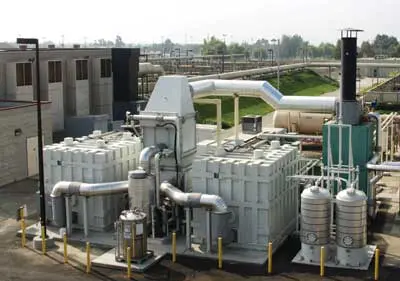 |
| A 2.8 MW system that FuelCell Energy installed at a wastewater treatement plant Chino, California |
“There’s no routine maintenance that requires it to be cooled down. If we need to stop making electricity, say if there’s a problem with the grid, we just put it into hot stand-by and keep it going with a little bit of fuel,” he adds.
The units are expected to see around 95% uptime. Typically uptime will be in the high 90s during the regular generation years, and drop to the low 90s in the year that the restack maintenance is performed. When the stacks are replaced, the company takes the old modules back to its factory and opens them up to remove the old cells, which are recycled by a smelting plant back into stainless steel.
Permits and finance
The project has been financially backed by Agriculture and Agri-Food Canada, which is providing a repayable contribution through the government of Canada’s Canadian Agricultural Adaptation Program. This aims to help the Canadian agricultural sector adapt and remain competitive. In British Columbia, this program is delivered by the Investment Agriculture Foundation.
An additional significant contribution from the Canadian government has come from its National Research Council. Other project partners include Sustainable Development Technology Canada (SDTC), and BC Bioenergy Network.
With regard to permitting a fuel cell project, Leo says that there are some specific regulations for safety, which are very similar to the same types of regulations for other equipment. Additionally, when the company delivers a fuel cell it has a certification stamp on it which demonstrates that it meets certain equipment safety standards.
“The only real difference is that in a lot of locations, and more and more as people come to understand the fuel cell benefits, a lot of the permitting activities are waived, like air permitting activities and so forth. In Connecticut and California air permitting are waived because it’s just understood that fuel cells are very very low emission devices,” comments Leo.
“In the State of California, when we come out with a new product we get that product tested by a third party who certifies us for the State of California that we meet very very low emission levels,” he adds.
Windows of opportunity
Thanks to its ability to use biogas in fuel cells, the company’s technology has caught the eye of Microsoft – a major consumer of energy at its data centres. According to Leo, when the software giant happened to be installing one such data centre in the Cheyenne, Wyoming area, which happened to be in close proximity to a wastewater treatment plant, it got in touch to explore the possibilities of fuel cell generation.
“They kind of put two and two together and said why don’t we do a ‘kick the tyre’ project at the wastewater treatment plant and we can see how your fuel cell runs on anaerobic digester gas, and we can see how your fuel cell powers our data centre,” says Leo.
Microsoft’s evaluation process starts with a sub megawatt system, so it’s installing a mini data centre at the wastewater treatment plant which will consume around 200 kW to pilot the technology. The fuel cell itself will be a 300 kW unit with the remaining 100 kW of capacity being fed to the wastewater plant. The demonstration project should be up and running later this year.
Conclusions
According to a recent report on the global market for fuel cells, the stationary fuel cell prime power market is experiencing rapid growth. The research evaluated 17 of the leading players in the market, and ranked FuelCell Energy top for both execution and strategy.
Having taken a closer look at this particular project, with its clever siting which allows it to make full use of not only its primary output of electricity, but also the by-products of heat and CO2 – all while exporting hydrogen for other uses – that assessment would seem plausible.
For years fuel cells have dangled the carrot of low emission power generation. Now, with the industry as a whole developing a wide variety of innovative projects, soon the time may finally be here when the technology delivers and takes us to the promised land of low emission, renewable energy.
Ben Messenger is Managing Editor of WMW Magazine
e-mail: [email protected]


